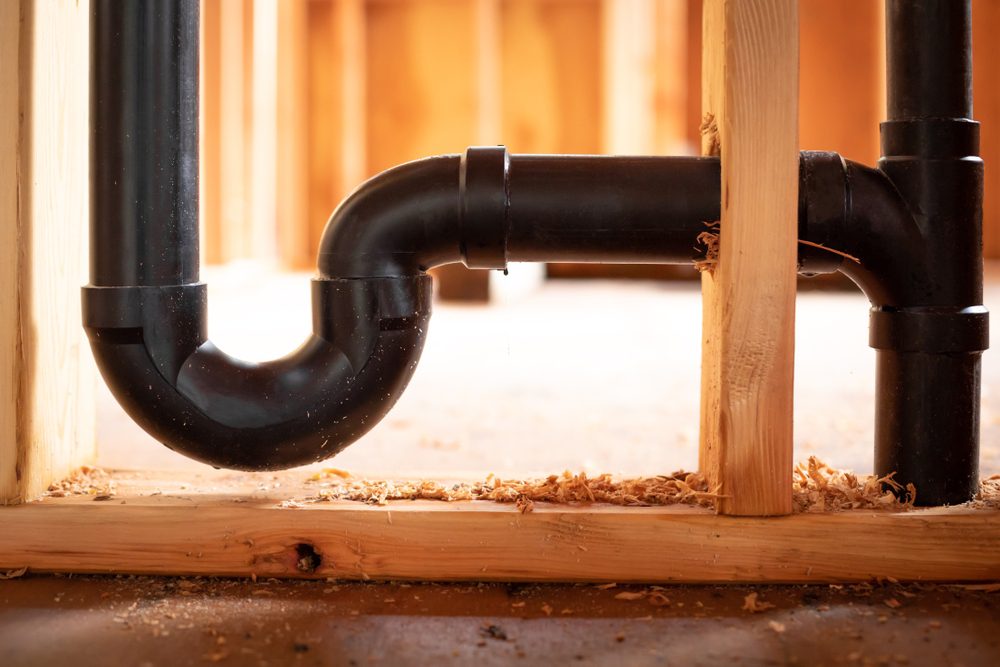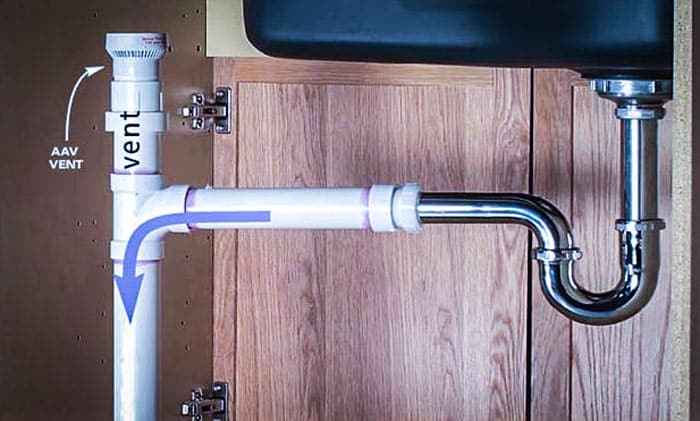In this article below you can locate some sound points in relation to What Are Plumbing Vents and Why Are They Important?.

Correct air flow in pipes systems is commonly neglected, yet it is crucial for maintaining the capability and security of your home's plumbing. Ventilation assists regulate air pressure, protect against the build-up of unsafe gases, and guarantee the reliable elimination of waste. In this guide, we will check out the importance of proper pipes ventilation, just how it functions, and the benefits it gives your pipes system.
Understanding Air Flow in Plumbing
Air flow in plumbing describes the network of pipes that allow air to stream via the water drainage system. These vents offer several purposes, consisting of controling air pressure within the pipelines, stopping sewer gases from entering the home, and assisting in the smooth circulation of wastewater.
How Ventilation Functions in Plumbing Equipments
Atmospheric Pressure Policy
Appropriate ventilation keeps balanced air pressure within the pipes system. When water flows through pipelines, it displaces air. Without ample ventilation, this variation can develop negative stress, resulting in slow drains or siphoning of water from catches, which can trigger undesirable odors to permeate right into the home.
Protecting Against Drain Gas Build-up
Among the most crucial features of plumbing vents is to stop sewer gases, such as methane and hydrogen sulfide, from collecting within the home. These gases can position serious health and wellness dangers and are very flammable. Vent pipes permit these gases to leave securely outside.
Aiding in Waste Removal
Air flow aids in the reliable elimination of wastewater by stopping airlocks in the water drainage system. When air can stream openly via the vents, it permits water and waste to move efficiently through the pipes, reducing the risk of blockages and back-ups.
Sorts Of Pipes Vents
Main Stack Vent
The major stack air vent, additionally known as the air vent pile, is the key air vent in a plumbing system. It expands from the primary drainpipe align with the roof, allowing gases to leave and fresh air to enter the system.
Branch Vent
Branch vents connect to the major stack vent and offer specific components, such as sinks, toilets, and showers. These vents guarantee that each component has appropriate ventilation to function correctly.
Air Admittance Shutoff (AAV).
An Air Admission Shutoff (AAV) is a one-way shutoff that enables air to get in the pipes system without the demand for a conventional vent pipeline expanding via the roof. AAVs are commonly made use of in remodellings or locations where installing a basic vent is unwise.
Indicators of Poor Ventilation in Plumbing.
Slow Draining Fixtures.
If your sinks, tubs, or bathrooms are draining pipes gradually, maybe an indication of poor air flow. Inadequate air circulation can create a vacuum effect, making it hard for water to drain properly.
Gurgling Sounds.
Gurgling audios coming from drains pipes are often an outcome of air being sucked with water catches as a result of negative pressure in the pipes. This is a clear indication of insufficient air flow.
Undesirable Odors.
Sewer smells inside your home are a warning that your plumbing system is not appropriately aerated. This could imply that sewage system gases are not being effectively aired vent outside, leading to potentially unsafe problems.
Typical Ventilation Mistakes.
Inadequate Vent Sizing.
Making use of small air vent pipes can bring about inadequate air circulation and stress imbalances in the system. It's important to use vents that satisfy the particular demands of your plumbing system.
Improper Vent Placement.
Putting vents too far from the components they offer can lower their effectiveness. Correct positioning ensures that air can flow easily and successfully through the system.
Disregarding Code Requirements.
Building regulations give particular guidelines for pipes ventilation. Ignoring these codes can lead to a system that fails to operate appropriately and may bring about pricey repairs or health hazards.
Advantages of Correct Ventilation.
Improved System Performance.
Effectively ventilated plumbing systems run much more successfully, with fewer obstructions, faster draining, and less stress on the pipes. This efficiency extends the lifespan of the pipes system.
Improved Air High Quality.
By protecting against drain gases from entering your home, appropriate ventilation adds to far better interior air quality, making your living atmosphere healthier and extra comfy.
Stopping Water Damage.
Ample air flow aids protect against water from being siphoned out of catches, which can bring about sewage system gases going into the home and causing water damages over time.
Actions to Ensure Correct Air Flow.
Consulting Plumbing Codes.
Always speak with regional pipes codes when designing or modifying your pipes system. These codes supply the necessary guidelines for correct airing vent and ensure your system satisfies safety requirements.
Regular Inspection and Maintenance.
Normal evaluations can aid recognize potential air flow problems prior to they become major problems. Maintenance jobs, such as cleaning up air vent pipes and checking for obstructions, are crucial for keeping the system in good working order.
Specialist Installation.
For new installments or major alterations, it's wise to employ an expert plumbing professional. They have the proficiency to guarantee the ventilation system is appropriately made and set up according to code.
Verdict.
Appropriate air flow is a vital part of any pipes system, guaranteeing that it works effectively and securely. By recognizing the relevance of air flow, identifying the signs of poor air flow, and taking steps to keep your system, you can prevent costly problems and safeguard your home's air high quality.
4 Things You Should Know About Your Plumbing Vents
What Plumbing Vents Are
Also called a vent stack, a plumbing vent is a vertical pipe attached to your drain line that runs through your roof. The plumbing vent pipe, or plumbing air vent, removes gas and odors from your plumbing system and allows fresh air to enter the pipes, helping the water to flow out of the drain pipes.
What Plumbing Vents Do
Plumbing vents have two basic functions. One of which is to allow unpleasant smelling wastewater and sewer gasses to escape your plumbing system instead of entering your home. Plumbing vent pipes are typically located on roofs, away from windows, to ensure the fumes exit the home completely.
The other function of the plumbing vent is to move fresh air into your plumbing system. This helps move water through every plumbing fixture in your house, like toilets and sink drains. Think of the way in which you need to let a little air into the bottle as you pour soda in order to make the drink flow smoothly.
Different Types of Plumbing Vents
True vent: This is the most common vent option. In simplest terms, a true vent is a vertical pipe attached to your drain line that exits through the roof. They often function as the main vent that other fixtures can connect to. Re-vent pipe or auxiliary vent: Attached to the drain line near specific plumbing fixtures, re-vent pipes run up and over to connect to the main vent. Common vent: Two plumbing fixtures installed on opposite sides of a wall are typically tied into the vent stack using something known as a sanitary cross. Wet vent: This venting option operates as a drain pipe and a vent at the same time. Wet vent drainage systems drain water from one fixture while venting the air from another. Although they’ve been used for over 100 years, wet vent systems have only recently been added to the plumbing code in many areas. If you’re planning on installing one in a bathroom remodel, make sure you check your local code prior to construction. Loop vent: For free-standing fixtures like kitchen island sinks, loop vents are ideal. These vent pipes run under the floor, rise from the P-trap, and create a loop inside the cabinet sink. Air admittance valve: An AAV is a one-way mechanical valve typically installed at the site of the plumbing fixture. AAVs allow venting to occur without having to tie into a larger venting system. They’re ideal for venting fixtures where you aren’t able to easily connect to an existing vent system. Common Plumbing Vent Issues
Although vent pipes typically don’t have water flowing through them, they’re still subject to many typical plumbing issues. For example, clogs are one of the most common problems associated with sewer vent pipes. If your vent pipe gets clogged, all of your plumbing fixtures tied into the vent stack will be affected.
A sink with a slow drain that bubbles and gurgles or a strong sewage smell around your toilet are both indicators that your toilet vent pipe is clogged. Because most vent pipes exit through the roof, old leaves, twigs or even a bird’s nest could be clogging the pipe.
Clogs in your vent pipe system cause a buildup of negative pressure, meaning that water won’t be able to flow out of your home very well. It’s similar to putting your finger over the opening of a straw to trap water inside. When you remove your finger, the water is able to flow out of the straw.
If you suspect you have any blockage in your vent, make sure you have a professional come examine the situation. Left unchecked, a blocked air vent can lead to other costly repairs, like leaks and sediment buildup.
Under Pressure
Pipe vents are essential aspects of a home’s plumbing system. Owning a home means learning about all sorts of things you never put much thought into before. But by understanding as much as you can about the important systems of your home, you can keep those budgets intact and those anxiety levels low.
https://www.homeserve.com/en-us/blog/home-improvement/plumbing-vents/

As a fervent person who reads on The Upsides of Proper Ventilation in Plumbing Design, I assumed sharing that editorial was a smart idea. If you enjoyed our blog post kindly do not forget to share it. Thank you for your time. Please come by our site back soon.
Schedule Now!